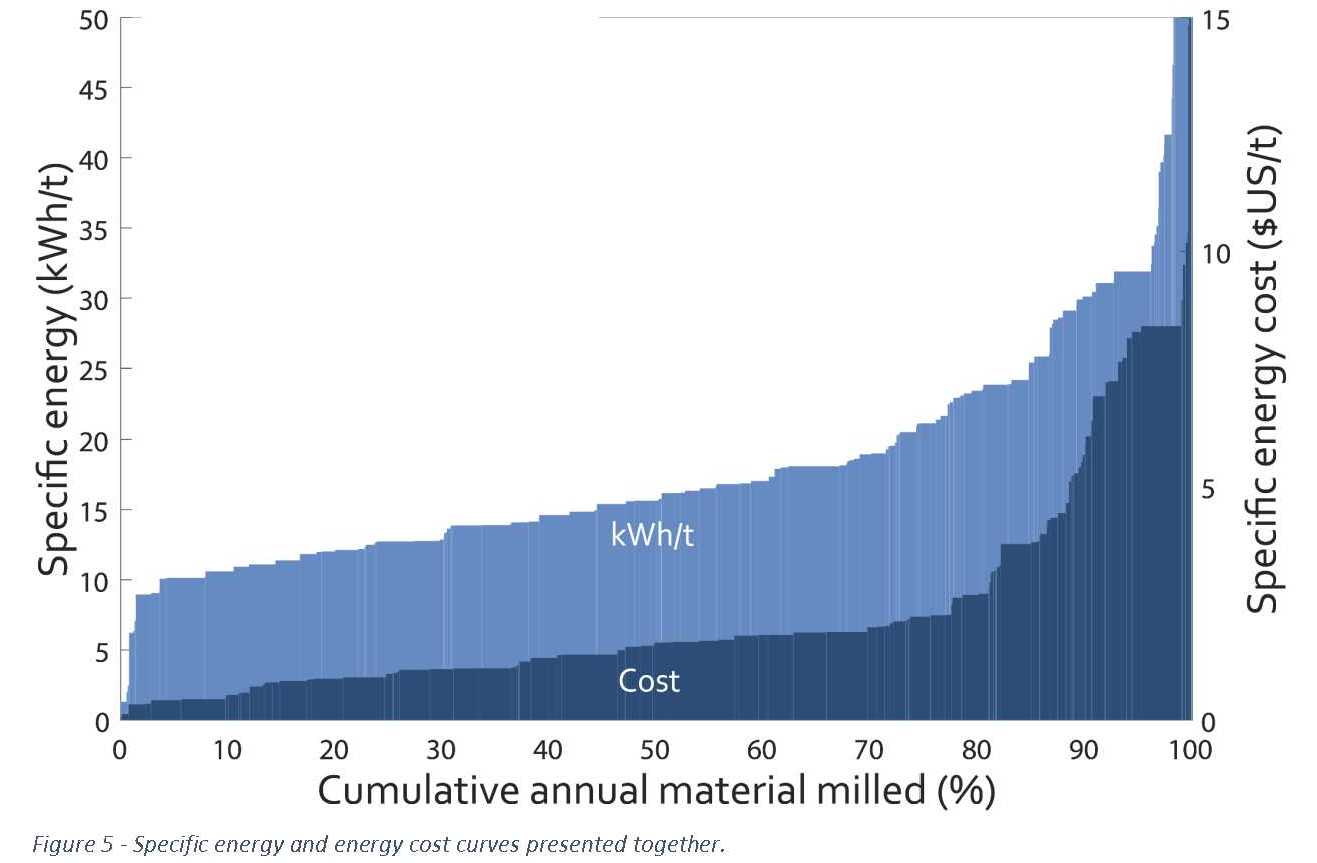CEEC has released the first new enhancement to its free suite of energy curve tools – specific energy cost curves – to help miners and METS companies consider the impact of energy costs and identify options to improve energy efficiency of comminution circuits.
This work is part of the $469,000, three-year CEEC Advanced Energy Curves Project being funded by the Queensland Government, METS Ignited (an Australian Government Industry Growth Centre) and the mining industry via CEEC.
Miners and METS can now input their latest plant data from different sites and equipment options via the CEEC website or at CEEC’s upcoming workshops to benchmark and improve performance using the newly enhanced curves. Using real data will help them to assess the impacts of planned or actual improvements. Updates to the CEEC website will be rolled out progressively, starting with the first enhancements by October 2018.
The specific energy cost curves are important because the variation in electricity price directly impacts the economic value that can be achieved by companies employing energy efficient comminution technologies.

A simple model has been developed that can be used to estimate availability of electricity generating assets near a mine. This can help operators and METS companies consider which mines are best suited to comminution and energy improvement and which projects represent the greatest return on investment. The factors included in the model are the average industry electricity price of the country where the mine is based and the geographical proximity to electricity generator assets.
SMI-JKMRC’s Senior Research Fellow, Dr Grant Ballantyne, who is leading the research component of the project, said the simple model was an initial attempt to describe a very complex system. He said the energy curve project had so far concentrated simply on productivity measures such as kWh/t, but the question had always remained: How would the curves change if energy cost and carbon emissions were adequately addressed?
“Influences on the price a mine pays for electricity include a complex interrelation of factors, many of which are qualitative, time dependent and hard to measure. Relying solely on mine location to assign an electrical price, therefore, is unlikely to result in an accurate prediction of pricing, but it is sufficient to capture the likely variability. For instance, the specific timing of contract negotiations and the length of the contract are likely to account for a +/- 10% difference in electricity pricing,” he said.
Enhancements from this project will add capabilities in the following areas: (1) energy cost, (2) ancillary energy, (3) curves across different commodities (4) embodied energy, (5) comminution circuit type, (6) individual equipment assessment, (7) calibration of fine grinding, (8) blasting impact, (9) liberation and recovery, and (10) global hardness approach.
For more information on the methodology used to develop this model, have a look at the following CEEC energy cost blogs posted by Dr Ballantyne:
Energy curve enhancement blog 1: Electricity price variability between countries
Energy curve enhancement blog 2: Electricity price variability within a country
Energy curve enhancement blog 3: Mine location as a predictor for connection to the grid
Energy curve enhancement blog 4: Specific energy cost curve enhancements
